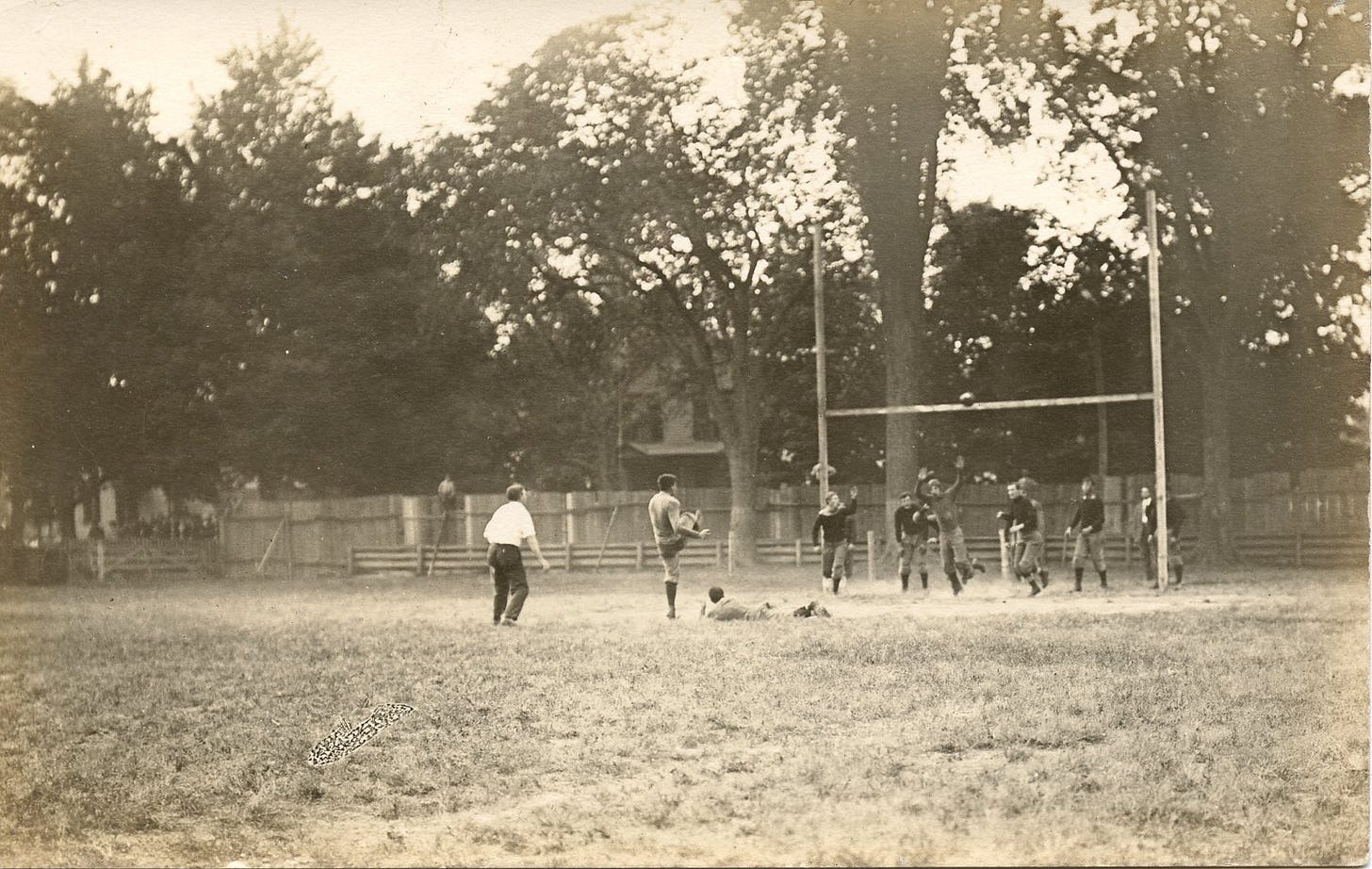Today's Tidbit... The First Extra Point Conversion by Forward Pass?
When football adopted its point-based scoring system in 1883, kicking goals from the field (field goals) were primary. They earned five points, touchdowns were worth two points, and goals from touchdowns (extra points) were worth four points. Although touchdowns gave teams two points, they also gave a chance at a free kick for the try after the touchdown. (The defense had to stand in the end zone and could rush the kicker only after the holder placed the ball to the ground.)

The point values we used today for each core method of scoring were in place by 1912, and the free kick for the extra point remained in place until 1922 as well. At that point, however, the extra point underwent a radical change. Instead of a free kick, the scoring team received the ball on the 5-yard line with the right to run one play from scrimmage. They could earn a point by carrying the ball across the goal line by run or pass, completing a pass into the end zone, or by making a contested kick, just like a field goal attempt. Although snapping to a holder for placement kicks on field goals had been around since 1896, not every team had an effective snapper, much less an effective kicker. (If the offense committed a penalty on a conversion play, they lost the right to earn a point, while a defensive penalty resulted in the offense receiving a point.)
Since the chances were not great to score by run or pass from the 5-yard line, most teams tried a dropkick attempt. Still, someone had to be the first to try to score by run or pass at some point in the season - on a broken play, if nothing else. However, since I do not have an effective way to confirm which college team was the first to earn a point by running or passing, I can only take the word of a sportswriter who claimed in 1954 that Washington & Jefferson was the first. Furthermore, he claimed they did so in a game against Lafayette at the Polo Grounds.
Many might think a matchup of the Leopards and Presidents would not be a big game or might not deserve to be played at the Polo Grounds, but Lafayette was riding a seventeen-game win streak. Similarly, W&J arrived with a seventeen-game unbeaten streak, having tied Carnegie Tech earlier in the season and played California to a scoreless tie in the 1922 Rose Bowl.
Lafayette earned TDs in the first and second quarters, missing the kick following the first score to give them a 13-0 halftime lead. Then, W&J's star halfback, Hal Erickson, who played in the 1919 Rose Bowl with Great Lakes and the 1922 Rose Bowl with W&J, ran it in for a third-quarter score, after which quarterback Wayne Brenkert converted a drop kick.
A W&J touchdown pass from quarterback Brenkert to right end C. L. Spillers in the fourth quarter tied it up, so the game’s outcome depended on W&J's ability to earn the extra point.
At that point, Brenkert dropped back for another dropkick and received the snap. However, instead of booting the ball, he threw it to left end Herb Kopf who had released from his position and was alone when he caught the pass on the other side of the goal line.
W&J's pass conversion was a trick play, and it may have been the first passing conversion in college football history. I promise to look around for earlier examples, but if a reader knows of one, let us know.
Football Archaeology is reader-supported. Click here to buy one of my books or otherwise support the site.



